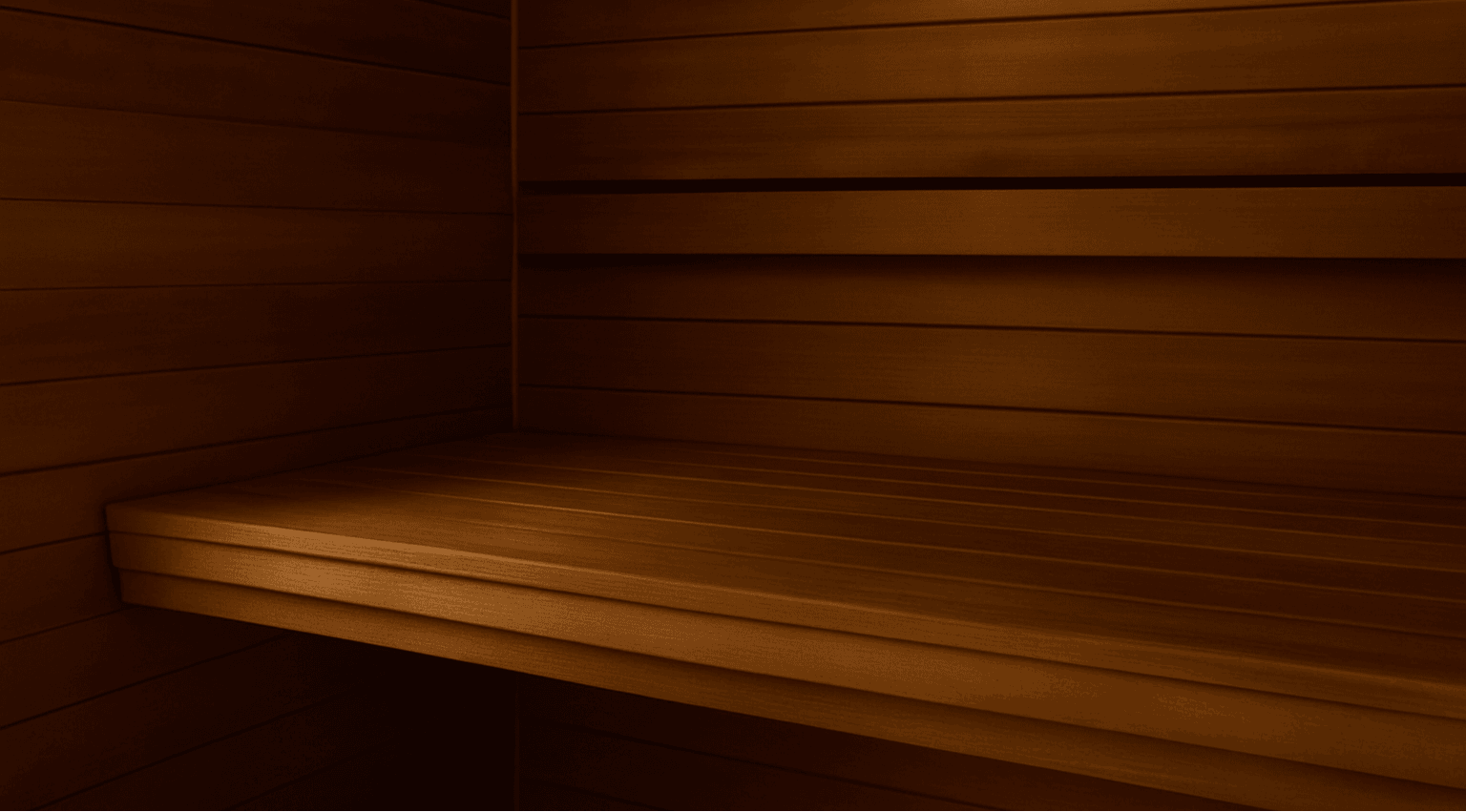
Can Sauna Sessions Help You Sleep Better? Research‑Backed Rituals
Quick Answers to Common Questions
Does using a sauna improve sleep quality?
Raising your core temperature in a sauna and then cooling down can help your body’s circadian rhythm shift into sleep mode. Hot bathing before bed has been shown to improve sleep quality and shorten the time it takes to fall asleep. Regular sauna users in Sweden also reported being happier, sleeping better and having more energy than non‑users.
How long before bedtime should I sauna?
For the best results, use your sauna 2–3 hours before bed. This allows your body temperature to rise and then gradually fall, mimicking the natural drop in core temperature that signals melatonin release and promotes sleep. Passive heat therapy research suggests that heat exposure can increase deep sleep and overall sleep quality in healthy adults.
How often should I use the sauna for better sleep?
Begin with one to three sessions per week at 15–20 minutes each. A Swedish survey found that participants who used a sauna one to four times per month reported the greatest increases in happiness and energy, while more frequent use didn’t provide additional benefits. Adjust frequency based on how you feel, and always stay hydrated.
What temperature and duration are best?
Most people find 50–70 °C (122–158 °F) comfortable for improving sleep. Start with 10 minutes and increase to 15–20 minutes as you acclimate. Allow time to cool down gradually afterward—either by sitting outside the sauna or taking a lukewarm shower.
In‑Depth: How Heat and Cool‑Down Influence Sleep
Body temperature and circadian rhythms
Your circadian rhythm, or biological clock, regulates sleep and wakefulness. Normally, your core body temperature drops in the evening, signaling the release of melatonin. Sauna sessions raise your core temperature; as you exit and cool down, your body interprets the rapid temperature drop as a cue for bedtime. This temperature swing can trigger melatonin production and promote deeper sleep.
Evidence from bathing and heat therapy studies
-
Japanese‑style bathing: Soaking in hot water in the evening improves sleep quality and shortens sleep‑onset latency. Repeated hot baths also improve mood and alleviate depressive symptoms.
-
Passive heat therapy: Studies indicate that heat therapy reduces sleep onset latency, increases deep sleep and improves overall sleep efficiency in healthy adults. The intensity of the heat and subsequent cooling appear to be key factors.
-
Swedish survey: Sauna users reported better sleep, higher energy and greater happiness compared with those who didn’t use saunas. The happiest participants used saunas one to four times per month, suggesting that moderation may be key.
Mechanisms: Endorphins, cortisol and melatonin
Heat exposure stimulates the release of β‑endorphins, your body’s “feel‑good” hormones, which can produce a sense of relaxation and well‑being. Sauna sessions can also lower cortisol (the stress hormone) and promote a parasympathetic “rest and digest” state, making it easier to unwind. As your body cools, melatonin production ramps up, helping you fall asleep more quickly and stay asleep longer.
Crafting your sleep‑friendly sauna ritual
-
Plan ahead: Schedule your sauna session 2–3 hours before bedtime to allow for a gradual cooldown.
-
Start slow: Begin with 10 minutes at a lower temperature, then build up to 15–20 minutes as tolerated.
-
Hydrate: Drink water before and after your session, and avoid alcohol or heavy meals.
-
Cool down gradually: After leaving the sauna, allow your body to cool naturally. A lukewarm shower or light stretching can help. Avoid cold plunges immediately before sleep, as the shock may be too stimulating.
-
Relaxation techniques: Practice deep breathing, meditation or gentle stretching in the sauna to further promote relaxation.
-
Consistency: Use the sauna 2–3 times per week. Listen to your body and adjust frequency if you feel fatigued.
-
Safety first: People with uncontrolled high blood pressure, heart conditions, pregnancy or other medical concerns should consult a healthcare professional before using a sauna.
Voice‑Optimized FAQ
Can using a sauna help with insomnia?
Yes. By raising and then lowering your core body temperature, saunas can signal your brain to release melatonin and relax. Studies on hot bathing have shown improved sleep quality and shorter sleep onset. However, saunas are not a cure for chronic insomnia; consult a healthcare provider if sleep problems persist.
How soon before bed should I stop using the sauna?
Finish your sauna session at least two hours before bedtime. This gives your body time to cool down naturally, which is essential for melatonin release. Taking a sauna too close to bedtime may leave your body temperature elevated, making it harder to fall asleep.
Are saunas safe to use every night for sleep?
Moderation is key. Evidence suggests that one to four sessions per month can improve mood and sleep. Daily sauna use may be safe for healthy adults, but start slowly and pay attention to your body’s response. Always stay hydrated and avoid long sessions.
Do infrared saunas work as well as traditional saunas for sleep?
Infrared saunas operate at lower temperatures (typically 45–60 °C) but still raise core body temperature. While research is limited, many people find infrared saunas relaxing and beneficial for sleep. The principles—heat exposure followed by cooling—remain the same.







Leave a comment
This site is protected by hCaptcha and the hCaptcha Privacy Policy and Terms of Service apply.